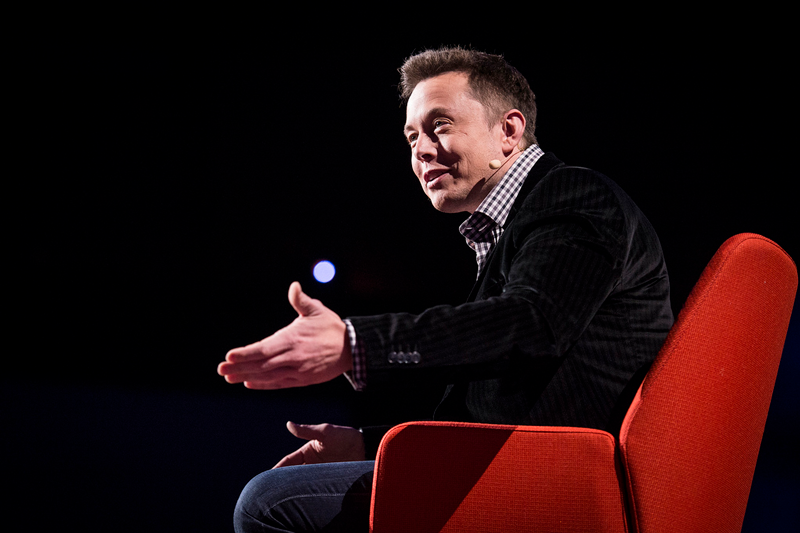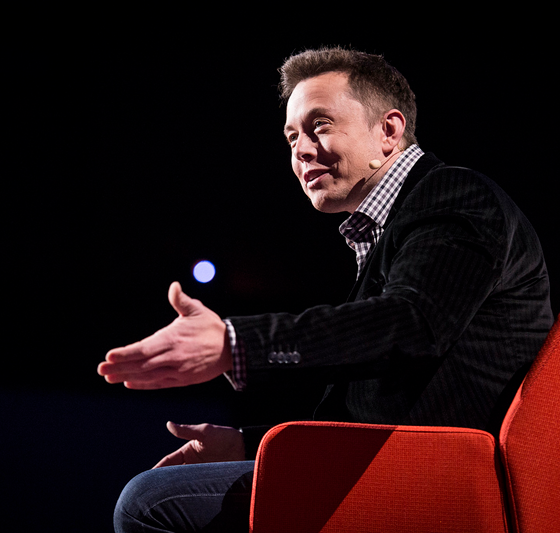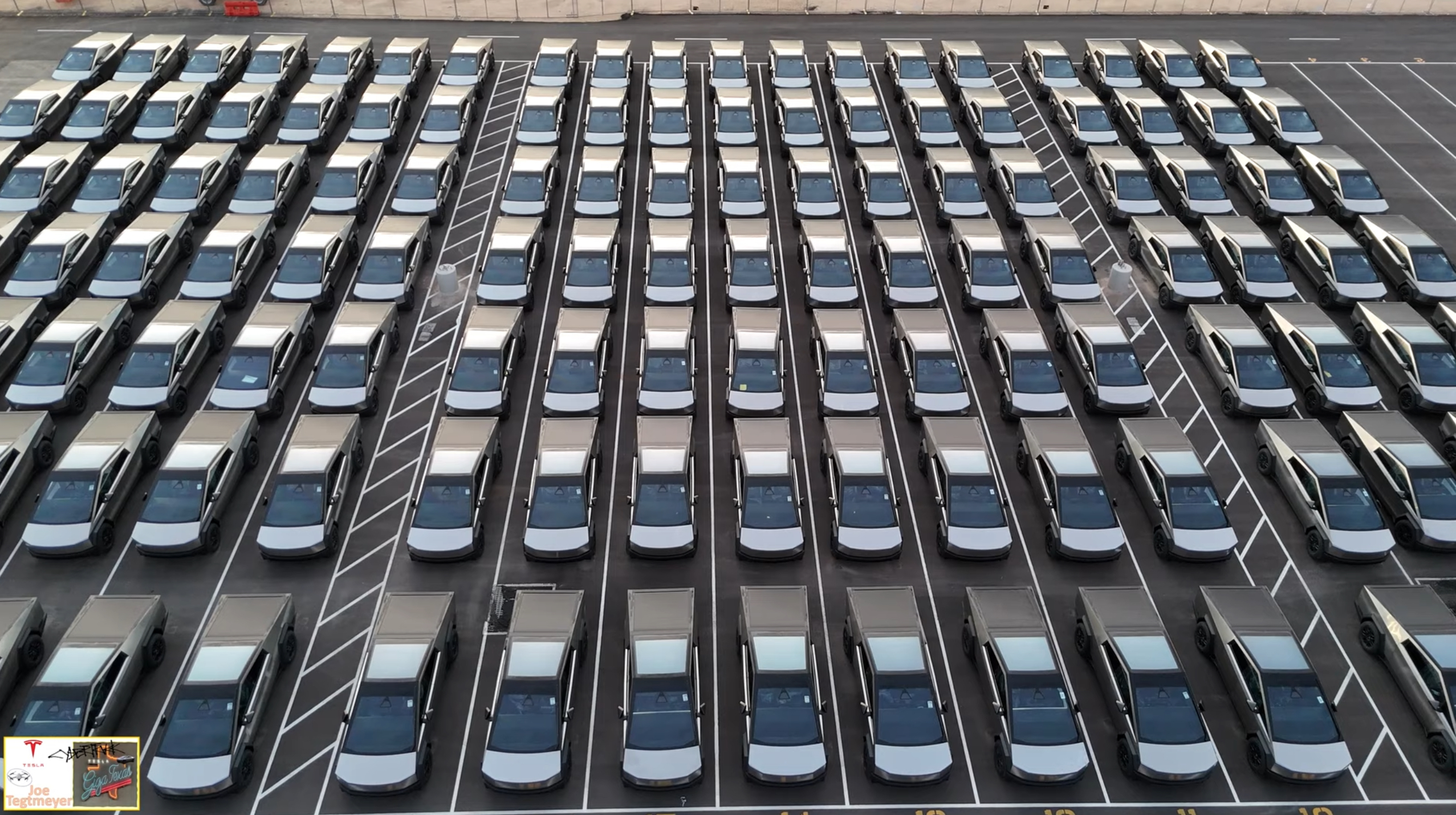

Investor's Corner
The Elon Musk moonshot approach – missed deadlines are a good thing
Tesla skeptics never tire of pointing out the company’s history of missing target dates for vehicle deliveries and other milestones. They do have a point. The most egregious example is of course Model X, which Tesla began delivering many months after the originally announced date. The latest offender is Model 3 – the company did technically deliver it on time, but so far production numbers are running far short of predictions, and the majority of buyers who signed up for the promised $35,000 EV are likely to be waiting until well into 2018. The development of Autopilot 2 also seems to be behind schedule – it looks like the promised driverless run from New York to LA will be pushed into next year.
However, the naysayers are dead wrong when they say Elon Musk hasn’t fulfilled his promises. Except for a few things, most of which nobody really wanted (battery swapping, a rollercoaster to get around the Tesla campus), the Iron Man has delivered in a big way. He promised a compelling electric sedan, an SUV with towing capability and eye-catching Falcon Wing doors, a reusable rocket that can land on a barge at sea (!), and other achievements straight out of the science fiction books, and all of these are now reality. Nevada Gigafactory? Open and producing batteries. Solar roof tiles? Rolling off the line in Buffalo. World’s largest battery array? Check (and this one was on time).
Considering Tesla’s stock market performance and the company’s legions of adoring fans, it’s clear that most people value accomplishment over punctuality. As Trent Eady, writing on Seeking Alpha, put it, “If Musk promises you the moon in six months and delivers it in three years, keep things in perspective: you’ve got the moon.”
What if Musk and company’s habit of missing self-announced deadlines is not a bug but a feature? Tesla Motors Club member Patrick C argues in a recent blog post that the “dream big and deliver late” strategy is actually the key to Tesla’s (and SpaceX’s) success.
Above: Check out the historic landing of a Falcon 9 rocket at Cape Canaveral with Elon Musk and the SpaceX team (Youtube: National Geographic)
Those of us who’ve been watching this show for a while have learned not to trust Musk’s predicted timelines. So why do his words still carry so much weight? Because we believe in what he’s doing, and we can see how hard he personally is working towards these goals, moving his “desk” to wherever the latest bottleneck is, and camping on the roof of the Gigafactory. “If Musk [were] viewed as just a wild dreamer, he would not have the following that he does,” writes Patrick C. “Musk is trying to do something that is important, something that’s never been done before, and that many people would like to see succeed. When this is the case, many are likely to give you some slack on the schedule, as long as you are working hard and showing progress.”
The most consistent carping about missed timelines comes from stock market analysts, because they focus on meeting quarterly forecasts. This obsession with short-term results is a major failing of today’s corporate world – as Patrick points out, it leads executives to think small, concentrating on things that can be done in three months. But Musk does not think small. He thinks in terms of “moonshots,” or “big hairy audacious goals,” which aren’t guaranteed to succeed, and can’t be done on a firm quarterly schedule. “To accomplish something of magnitude, you have to be willing to fail and you have to be willing to disappoint the Street,” says Patrick.
But if Musk and those around him know all this, why make over-optimistic predictions? Why not just say, “Here’s what we mean to accomplish, and it’ll be done when it’s done?”
Popular economist Danny Kahneman offered an answer in a recent episode of Freakonomics Radio: “If you realistically present to people what can be achieved to solve a problem, they will find that uninteresting. You have to overpromise in order to get anything done. When you look at big successes, the people that carried out those big successes were unrealistically optimistic. This may be necessary to get the initial resources and it may be necessary to get the enthusiasm that is needed to achieve anything at all, because there is so much inertia that realistic promises are at a major disadvantage.”
 |
Above: Patience… the Model 3’s are coming — a look at Tesla prepping for Model 3 Christmas deliveries (Reddit: tesla99)
Another pertinent quote comes from Mikhail Bakunin: “By striving to do the impossible, man has always achieved what is possible.”
As Patrick puts it, “If you want to move people off the status quo, you have to present them with something exciting. A promise of something 10 years from now will be discounted to the point of insignificance and ignored by most.”
A case in point: the timid promises made by major automakers, who announce plans to launch new lines of electric vehicles by 2025, or by politicians, who pledge to reduce greenhouse gas emissions by such-and-such an amount by 2050. These goals may be better than nothing, but they don’t excite anybody, because we all know that the people who set them will be on the golf course (or maybe we’ll all be underwater) by the time set for their completion.
In contrast, when Musk makes a promise, we know he stands behind it. The timeline may be shaky, but the goal is never in doubt. And the goals are important ones, innovations that can improve all of our lives and lead to a more sustainable society. In a world where politicians constantly harp on things we can’t afford, and problems that we can’t hope to solve, while the corporate world focuses on trivia like how to design a better razor or a quicker way to share videos of our cats, Musk is one of very few leaders who inspire people with a hopeful vision of the future. Humans can still accomplish great things, but only if we’re patient, and are willing to accept some failures and missed deadlines along the way.
===
Note: Article originally published on evannex.com, by Charles Morris

Investor's Corner
Tesla analyst realizes one big thing about the stock: deliveries are losing importance

Tesla analyst Dan Levy of Barclays realized one big thing about the stock moving into 2026: vehicle deliveries are losing importance.
As a new era of Tesla seems to be on the horizon, the concern about vehicle deliveries and annual growth seems to be fading, at least according to many investors.
Even CEO Elon Musk has implied at times that the automotive side, as a whole, will only make up a small percentage of Tesla’s total valuation, as Optimus and AI begin to shine with importance.
He said in April:
“The future of the company is fundamentally based on large-scale autonomous cars and large-scale and large volume, vast numbers of autonomous humanoid robots.”
Almost all of Tesla’s value long-term will be from AI & robots, both vehicle & humanoid
— Elon Musk (@elonmusk) September 11, 2023
Levy wrote in a note to investors that Tesla’s Q4 delivery figures “likely won’t matter for the stock.” Barclays said in the note that it expects deliveries to be “soft” for the quarter.
In years past, Tesla analysts, investors, and fans were focused on automotive growth.
Cars were truly the biggest thing the stock had to offer: Tesla was a growing automotive company with a lot of prowess in AI and software, but deliveries held the most impact, along with vehicle pricing. These types of things had huge impacts on the stock years ago.
In fact, several large swings occurred because of Tesla either beating or missing delivery estimates:
- January 3, 2022: +13.53%, record deliveries at the time
- January 3, 2023: -12.24%, missed deliveries
- July 2, 2024: +10.20%, beat delivery expectations
- October 3, 2022: -8.61%, sharp miss due to Shanghai factory shutdown
- July 2, 2020: +7.95%, topped low COVID-era expectations with sizeable beat on deliveries
It has become more apparent over the past few quarters that delivery estimates have significantly less focus from investors, who are instead looking for progress in AI, Optimus, Cybercab, and other projects.
These things are the future of the company, and although Tesla will always sell cars, the stock is more impacted by the software the vehicle is running, and not necessarily the vehicle itself.
Investor's Corner
SpaceX IPO is coming, CEO Elon Musk confirms
However, it appears Musk is ready for SpaceX to go public, as Ars Technica Senior Space Editor Eric Berger wrote an op-ed that indicated he thought SpaceX would go public soon. Musk replied, basically confirming it.

Elon Musk confirmed through a post on X that a SpaceX initial public offering (IPO) is on the way after hinting at it several times earlier this year.
It also comes one day after Bloomberg reported that SpaceX was aiming for a valuation of $1.5 trillion, adding that it wanted to raise $30 billion.
Musk has been transparent for most of the year that he wanted to try to figure out a way to get Tesla shareholders to invest in SpaceX, giving them access to the stock.
He has also recognized the issues of having a public stock, like litigation exposure, quarterly reporting pressures, and other inconveniences.
However, it appears Musk is ready for SpaceX to go public, as Ars Technica Senior Space Editor Eric Berger wrote an op-ed that indicated he thought SpaceX would go public soon.
Musk replied, basically confirming it:
As usual, Eric is accurate
— Elon Musk (@elonmusk) December 10, 2025
Berger believes the IPO would help support the need for $30 billion or more in capital needed to fund AI integration projects, such as space-based data centers and lunar satellite factories. Musk confirmed recently that SpaceX “will be doing” data centers in orbit.
AI appears to be a “key part” of SpaceX getting to Musk, Berger also wrote. When writing about whether or not Optimus is a viable project and product for the company, he says that none of that matters. Musk thinks it is, and that’s all that matters.
It seems like Musk has certainly mulled something this big for a very long time, and the idea of taking SpaceX public is not just likely; it is necessary for the company to get to Mars.
The details of when SpaceX will finally hit that public status are not known. Many of the reports that came out over the past few days indicate it would happen in 2026, so sooner rather than later.
But there are a lot of things on Musk’s plate early next year, especially with Cybercab production, the potential launch of Unsupervised Full Self-Driving, and the Roadster unveiling, all planned for Q1.
Investor's Corner
Tesla Full Self-Driving statistic impresses Wall Street firm: ‘Very close to unsupervised’
The data shows there was a significant jump in miles traveled between interventions as Tesla transitioned drivers to v14.1 back in October. The FSD Community Tracker saw a jump from 441 miles to over 9,200 miles, the most significant improvement in four years.

Tesla Full Self-Driving performance and statistics continue to impress everyone, from retail investors to Wall Street firms. However, one analyst believes Tesla’s driving suite is “very close” to achieving unsupervised self-driving.
On Tuesday, Piper Sandler analyst Alexander Potter said that Tesla’s recent launch of Full Self-Driving version 14 increased the number of miles traveled between interventions by a drastic margin, based on data compiled by a Full Self-Driving Community Tracker.
🚨 Piper Sandler reiterated its Overweight rating and $500 PT on Tesla $TSLA stock
Analyst Alexander Potter said FSD is near full autonomy and latest versions showed the largest improvement in disengagements, from 440 miles to 9,200 miles between critical interventions pic.twitter.com/u4WCLfZcA9
— TESLARATI (@Teslarati) December 9, 2025
The data shows there was a significant jump in miles traveled between interventions as Tesla transitioned drivers to v14.1 back in October. The FSD Community Tracker saw a jump from 441 miles to over 9,200 miles, the most significant improvement in four years.
Interestingly, there was a slight dip in the miles traveled between interventions with the release of v14.2. Piper Sandler said investor interest in FSD has increased.
Full Self-Driving has displayed several improvements with v14, including the introduction of Arrival Options that allow specific parking situations to be chosen by the driver prior to arriving at the destination. Owners can choose from Street Parking, Parking Garages, Parking Lots, Chargers, and Driveways.
Additionally, the overall improvements in performance from v13 have been evident through smoother operation, fewer mistakes during routine operation, and a more refined decision-making process.
Early versions of v14 exhibited stuttering and brake stabbing, but Tesla did a great job of confronting the issue and eliminating it altogether with the release of v14.2.
Tesla CEO Elon Musk also recently stated that the current v14.2 FSD suite is also less restrictive with drivers looking at their phones, which has caused some controversy within the community.
Although we tested it and found there were fewer nudges by the driver monitoring system to push eyes back to the road, we still would not recommend it due to laws and regulations.
Tesla Full Self-Driving v14.2.1 texting and driving: we tested it
With that being said, FSD is improving significantly with each larger rollout, and Musk believes the final piece of the puzzle will be unveiled with FSD v14.3, which could come later this year or early in 2026.
Piper Sandler reaffirmed its $500 price target on Tesla shares, as well as its ‘Overweight’ rating.








